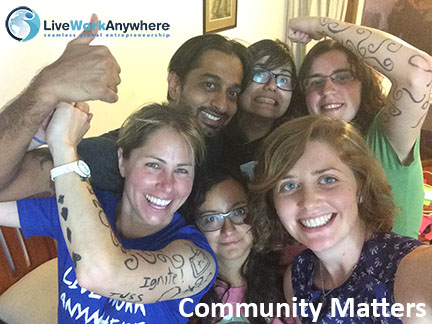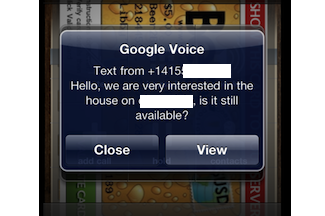I like to travel solo and am very independent. I love having experiences, overcoming the unexpected, challenging myself and figuring things out.
I also love that you meet random strangers who become friends in a very short period of time.
Lately I’ve been thinking a lot about community and just how important it is to curate.
StartupBus
I went on a week-long adventure on StartupBus.com. I rode on a bus with 30 other people from NYC from New York to San Antonio, Texas. We spent 3 days on the bus, building a startup.
I had been to Startup Weekends, LEAN Startup Machine, and every other startup event under the sun. Plus, I love to travel.
So, I thought I had it figured out, easy trip. But this was definitely not the same as any other event.
We were thrown under the bus a few times. We needed to build a startup, in 72 hours, legit, no excuses. Nobody could leave, nobody could back down. After 2 hours of sleep, and in sweatpants, we unexpectedly pulled up to Georgia Tech, where we were called – in random order – to give our company pitches to a group of VCs, dressed in suits.
This is one of many examples of throwing our group into the unknown. By the end, I had never felt more like family with my team. We were under a lot of stress, running on no sleep, and we had our bouts, but I had grown close to my team, my bus, and our fearless leaders – our conductors.
I went in expecting a Startup Weekend. I came out with a group of friends, people who were like me – crazy enough to ride a bus and build a startup. I gained a group of lifelong friends on a 72 hour trip.
The illuminati of the startup world, experiencing trauma like military squadrons,
Would I do it again? In a heartbeat. In fact, I’m seeking it out, and I’m trying to create more experiences like that in my life.
StartupChile
Prior to StartupBus, I went to Santiago, Chile, to give an Ignite Talk. When I arrived, I had expected the same old routine of traveling solo.
But I hung out with generations 8 and 9 from StartupChile. (I had applied for gen. 8 but got denied, but visiting my friends who got in).
At the ending party to celebrate the last class and welcome in the new, I felt a lump in my throat and a tear roll down my cheek as the coordinator from StartupChile started to get choked up in his speech. He said it was always so hard to say goodbye and that so many experiences and memories had ensued.
I felt it in the room. I saw it in the friendships, the smiles, the hugs. This was no easy goodbye.
It reminded me of my trip in Spain, when I was 20. Then suddenly things that I had never put together before started making sense.
Spain
My trip to Spain changed my life. Not only were the intense challenges that I overcame and grew from life-changing, but I suddenly realized that it was the community that made my visit most worthwhile.
My 21st birthday was not spent barhopping and getting wasted in Wisconsin. I was surrounded by a group of lifelong friends, in my favorite pub, and Happy Birthday was sung to me in 5 different languages.
Every night after classes my friends and I would go out to barrio Humedo and have a beer and talk about our experiences that day. I never smiled so much, never felt happier or more at peace. I looked forward to every moment I’d spend with them.
Leaving Spain was one of the saddest days of my life. I’ll never forget the bus station, Jamie and Nina hugging each other for support as the bus rolled away – all of us with tears in our eyes.
When Mattias sent me a virtual beer months later while I was at work, it was much more than an email, it was an emotional hurricane. The virtual beer was just a mechanism that rekindled that deep connection. It affected me so much that it was the reason I built Beer2Buds.
It was too expensive to travel to Sweden, England, and Germany on a regular basis. I wanted to never lose touch no matter how far apart we were.
I went back to Spain a year later, after finishing school and saving all my pennies. But it wasn’t the same. I walked the same streets, ate the same foods (mmm tortilla!), visited my old schools, and even had a beer in el Humedo.
It felt lonely. I had a few friends there. But that short period of time, with a blend of people in a similar situation, experiencing the same things at the same time, was the key to my experience.
In Chile, I bonded with the new and old class (primarily the new one) and even in my short 3 weeks my heart broke when going home. My face hurt the last night from smiling and my feet from dancing, just from a spontaneous dinner meeting at a friend’s house – a friend who was a stranger only a week before and is now a lifelong friend.
In Summary:
Mutually parallel experiences bond people in ways that will never happen otherwise. And having the right mix of people can change the way you see the world.
Someone asked me once “how do you get your sense of community”. For years this question haunted me – I had no good answer.
Now I believe I do. I find like-minded people and curate life-changing experiences, particularly related to travel. This makes me feel whole with a sense of belonging.
What about you – how do you get your sense of community from your world?












